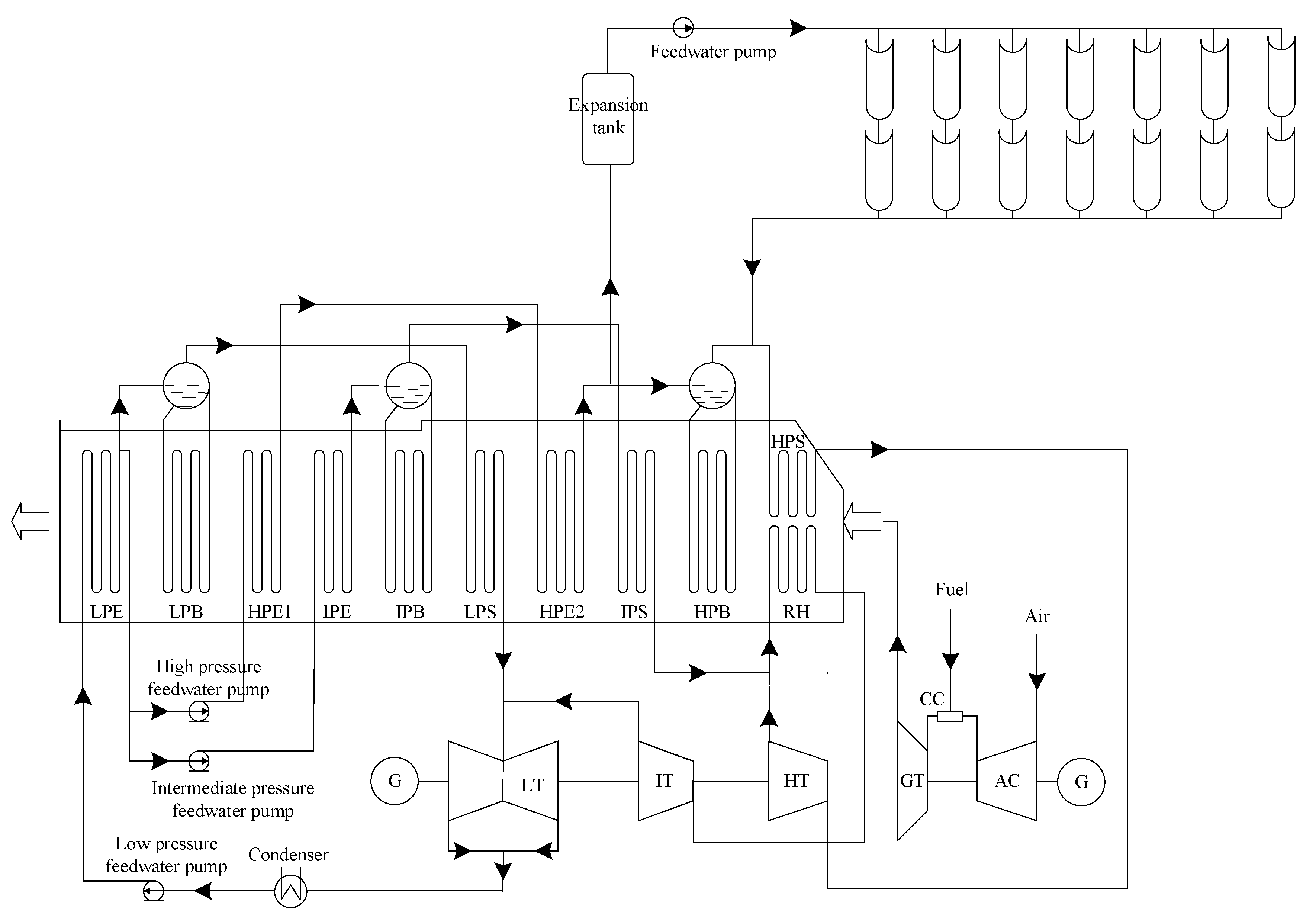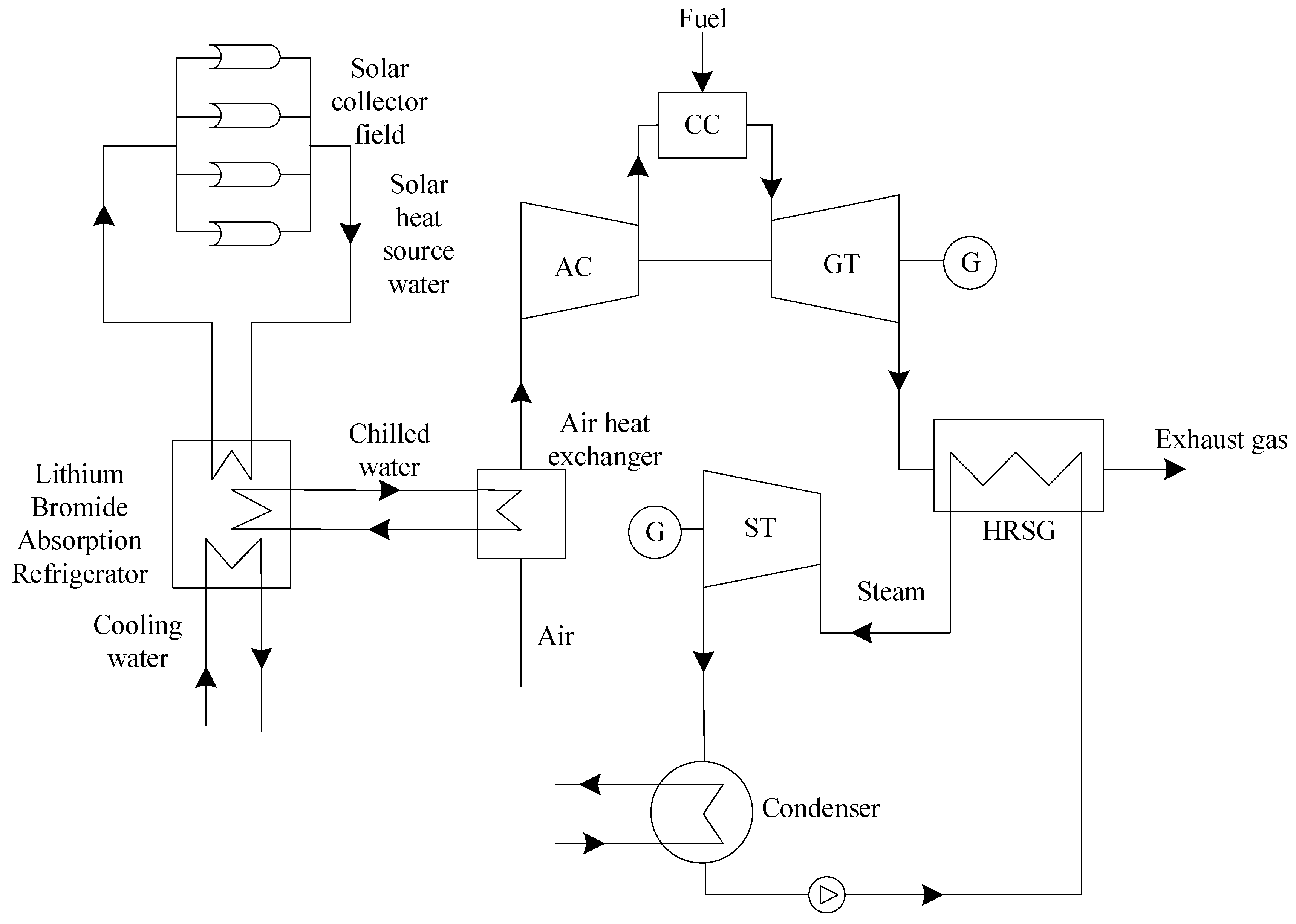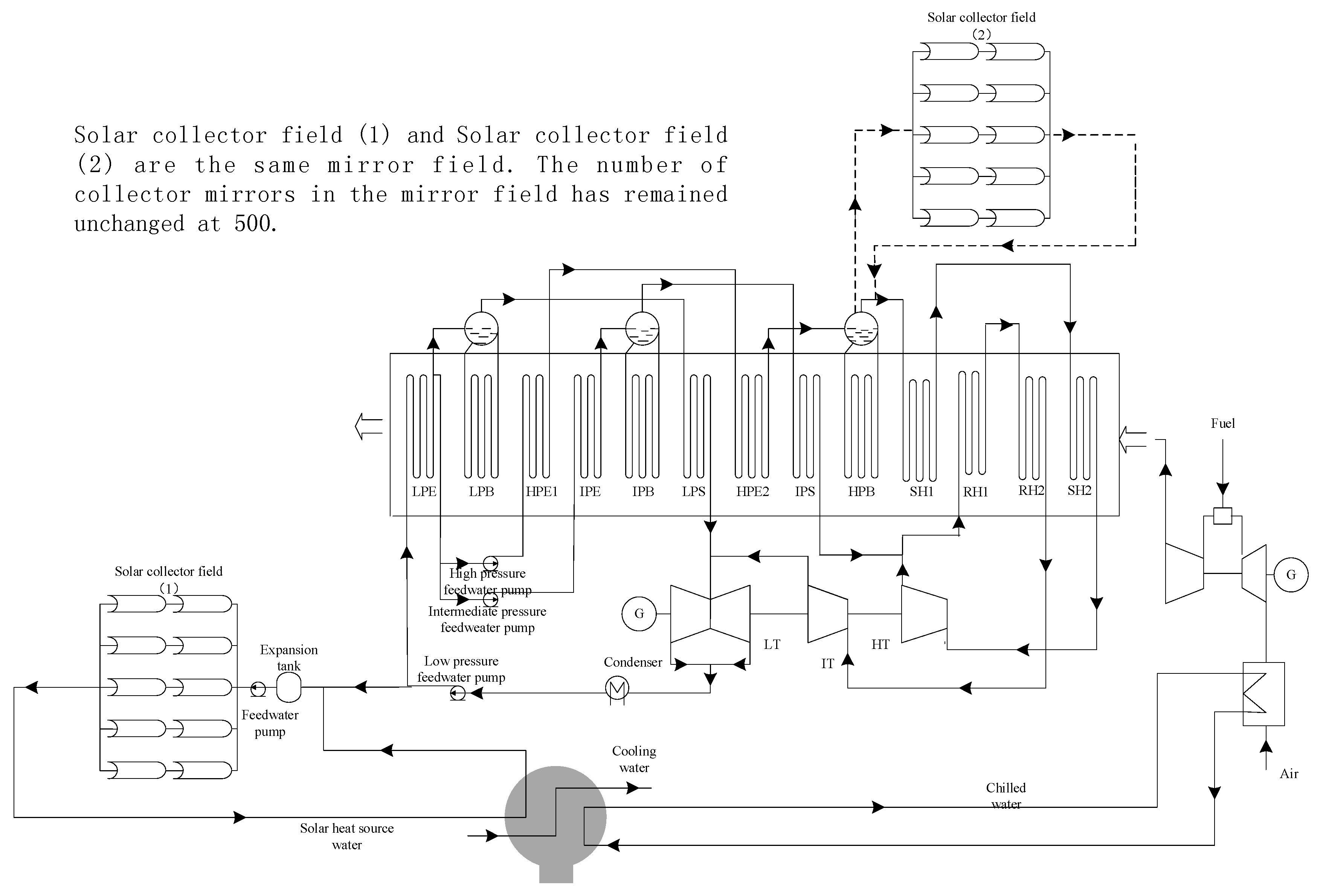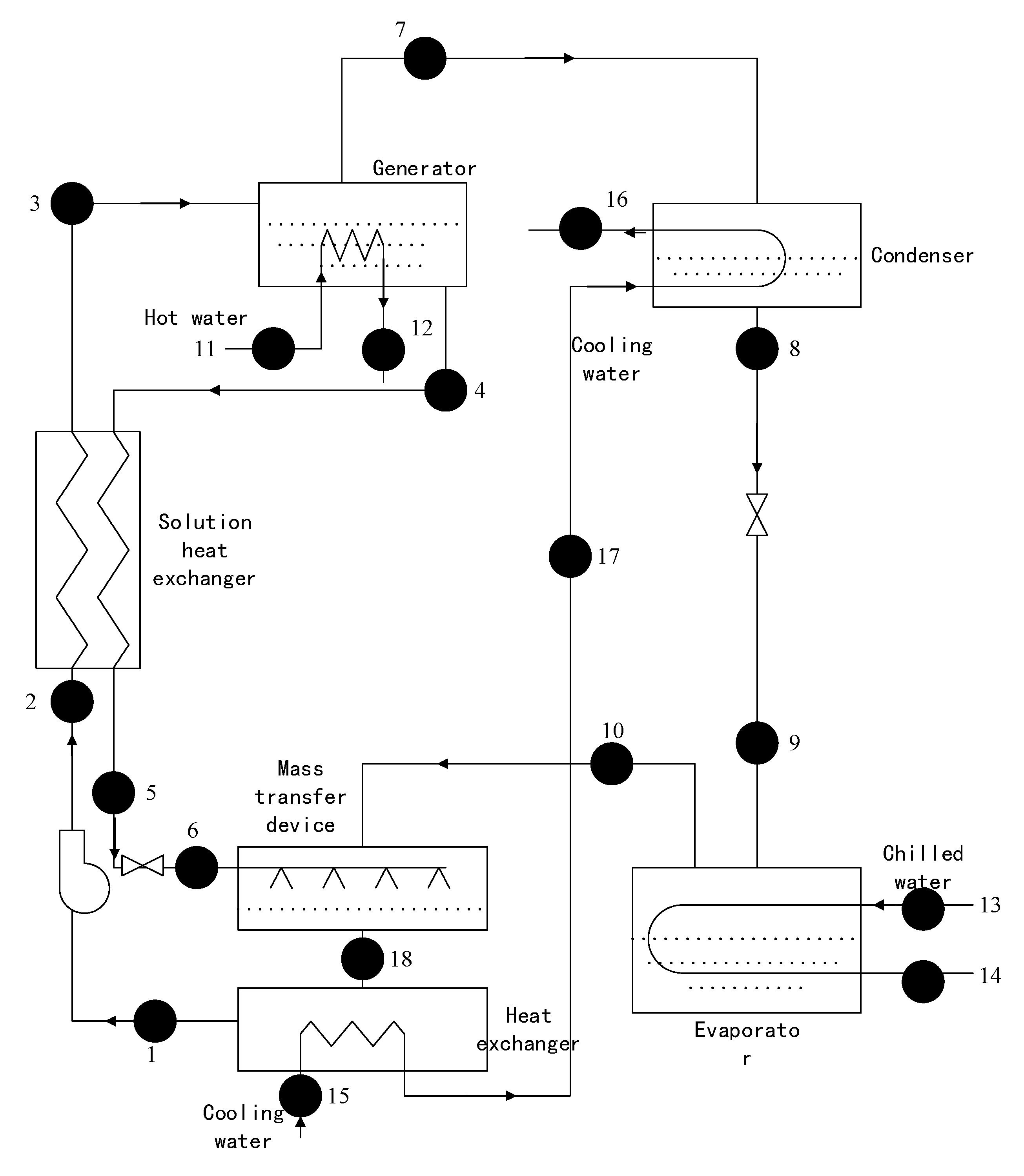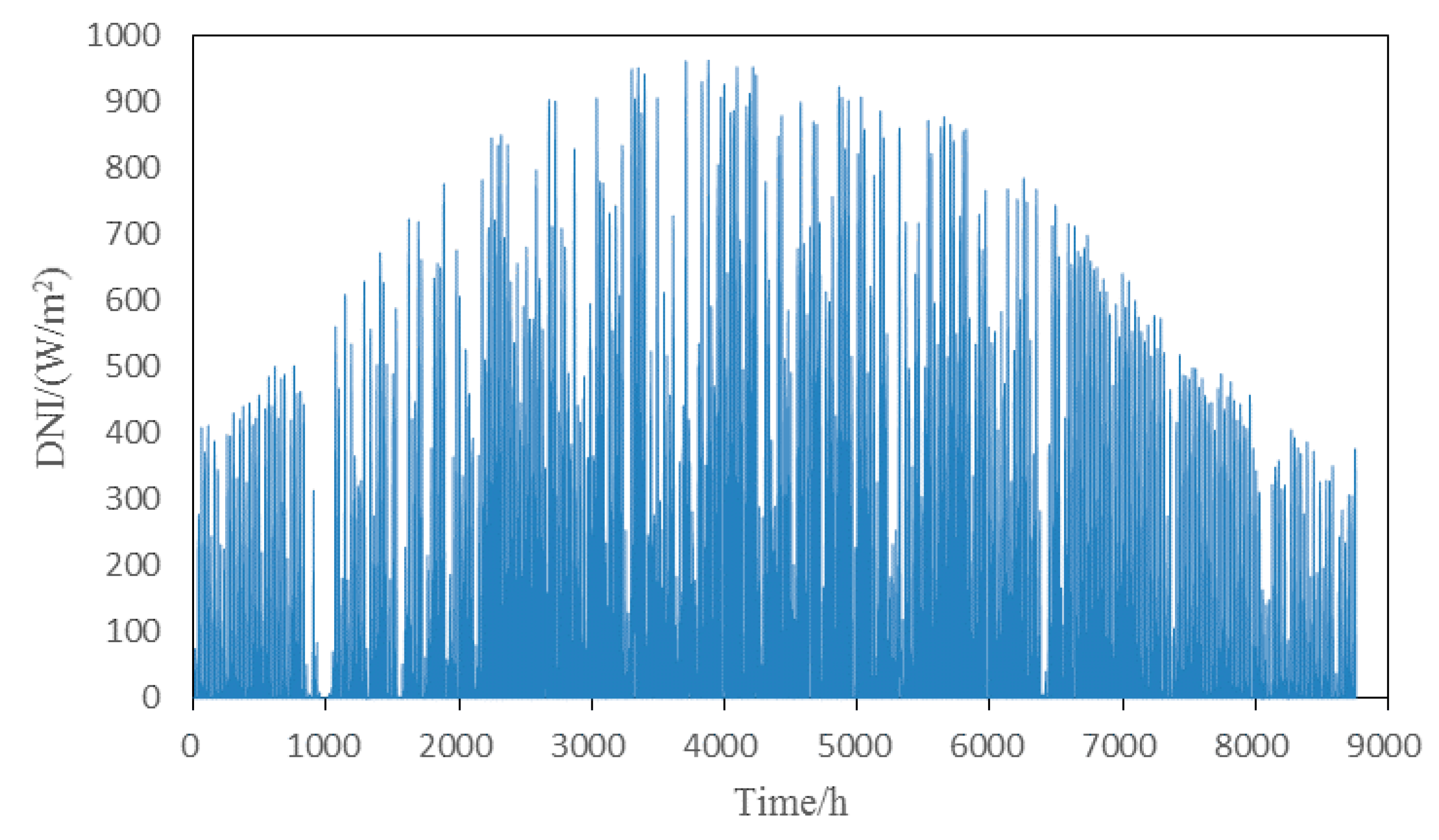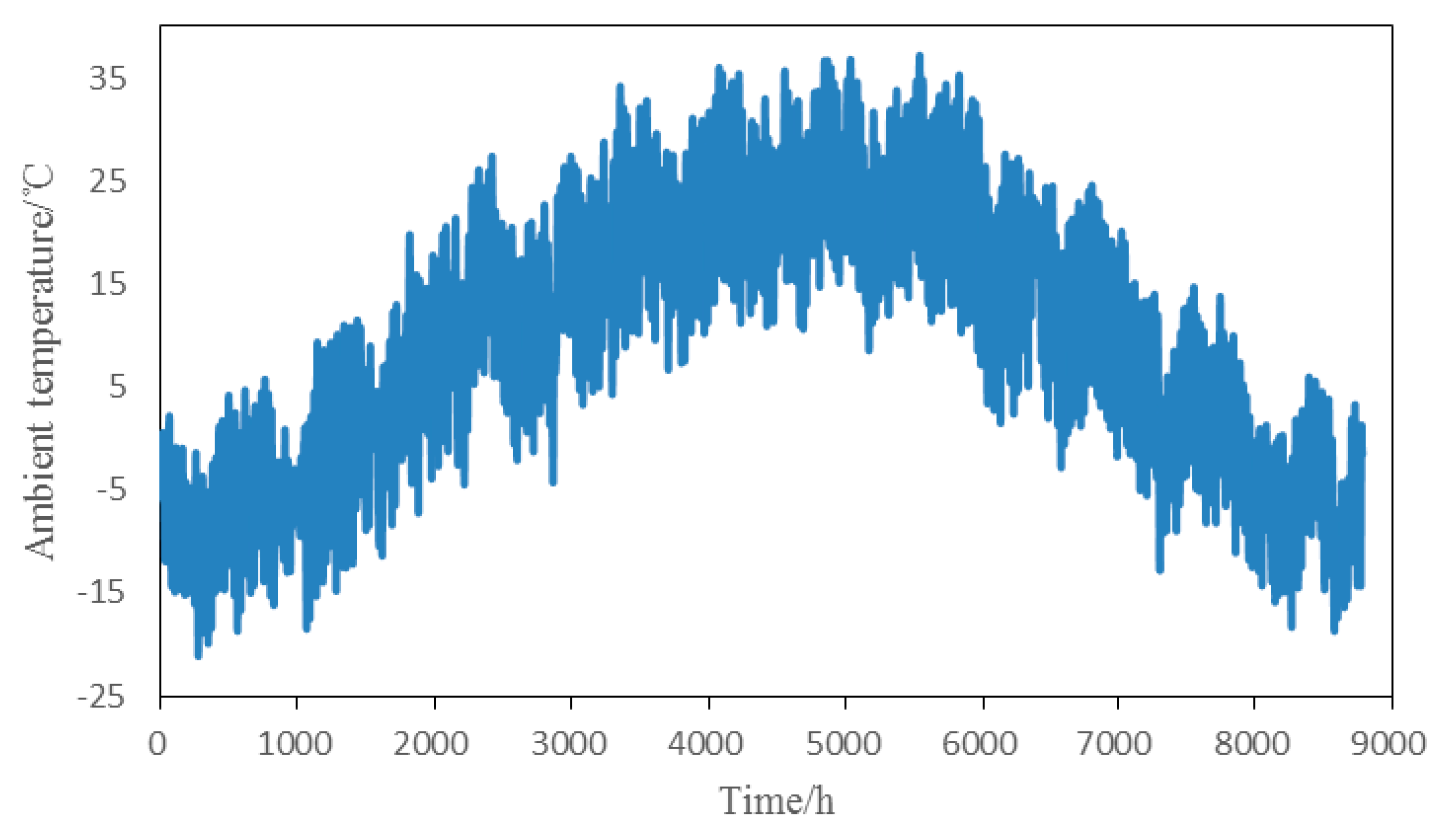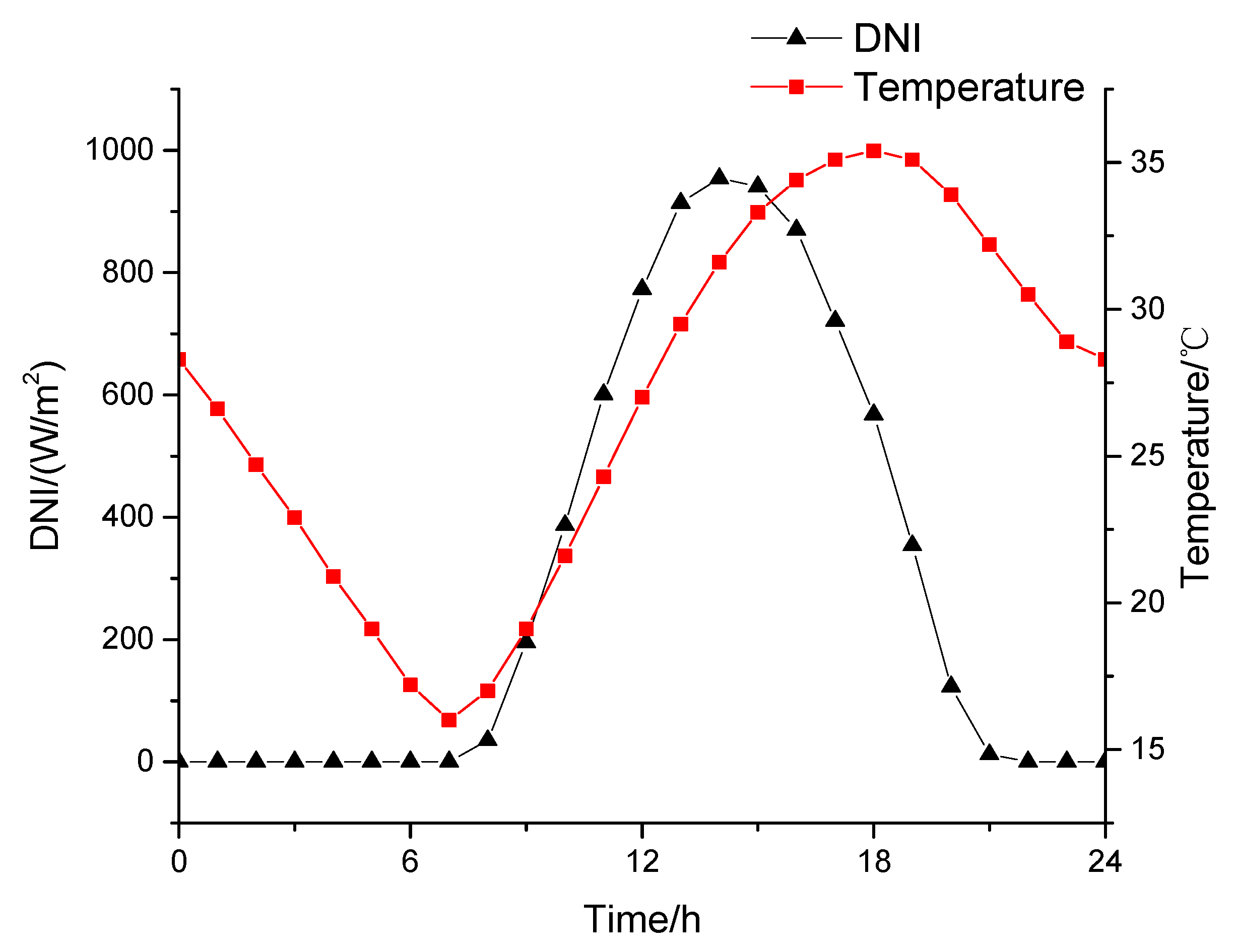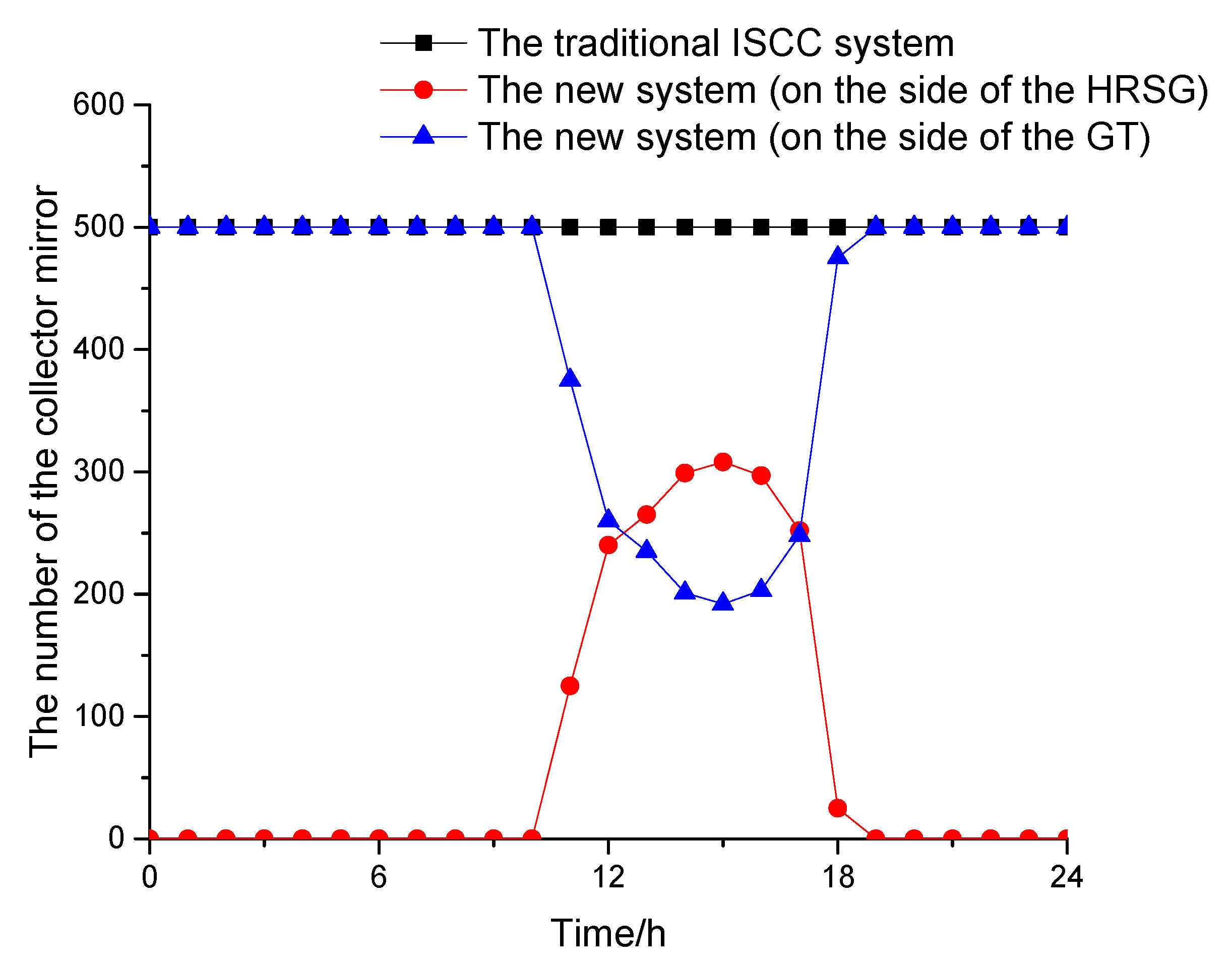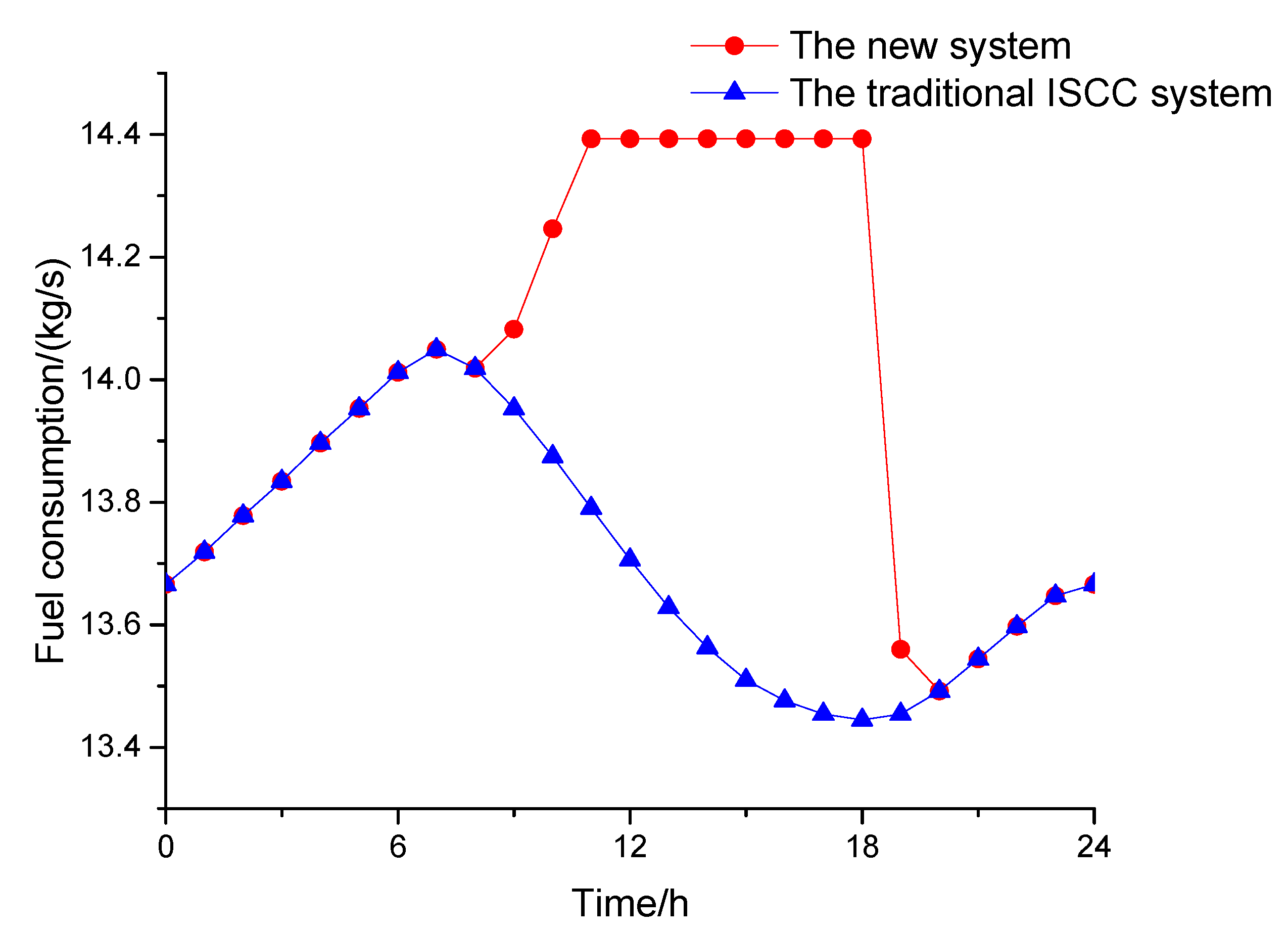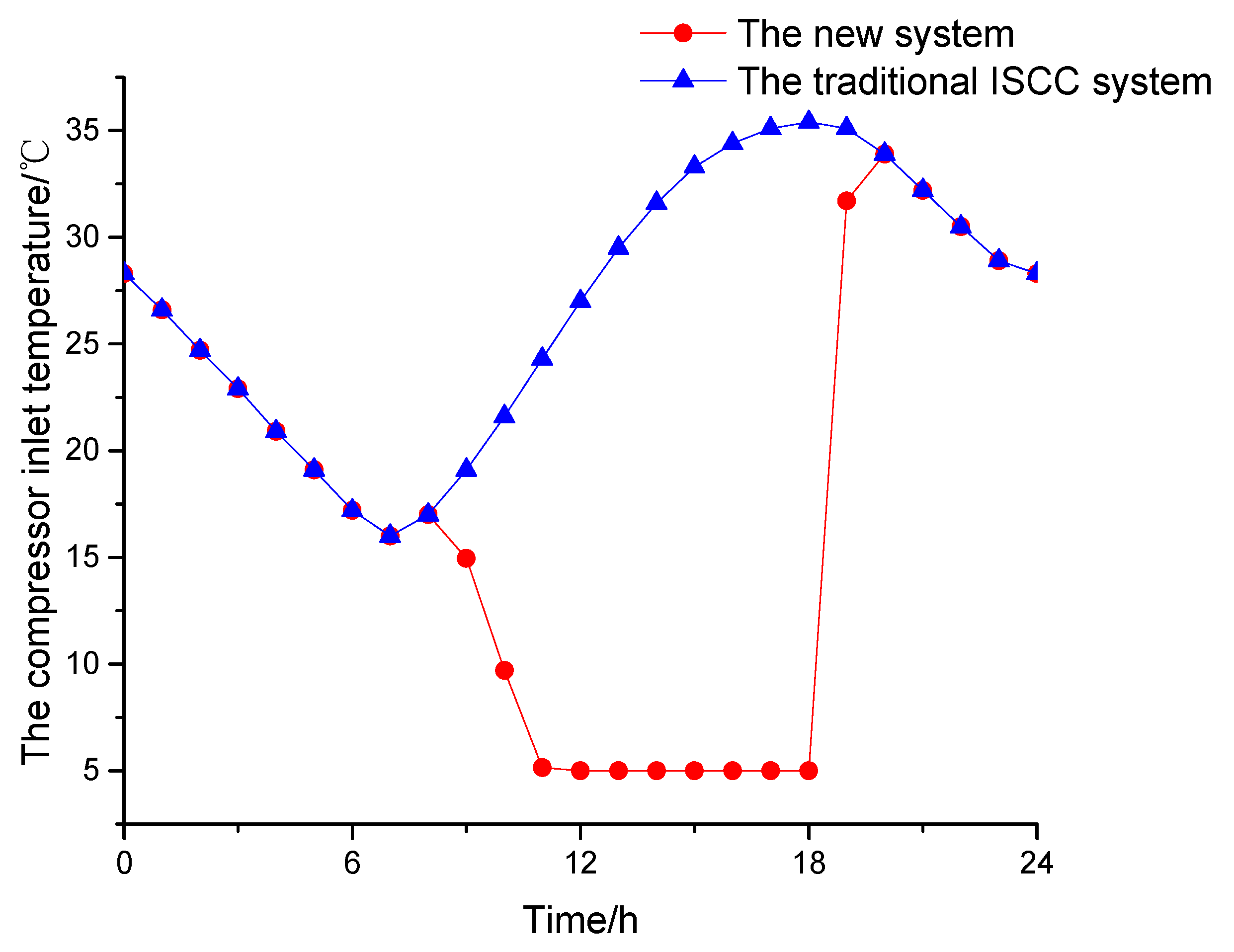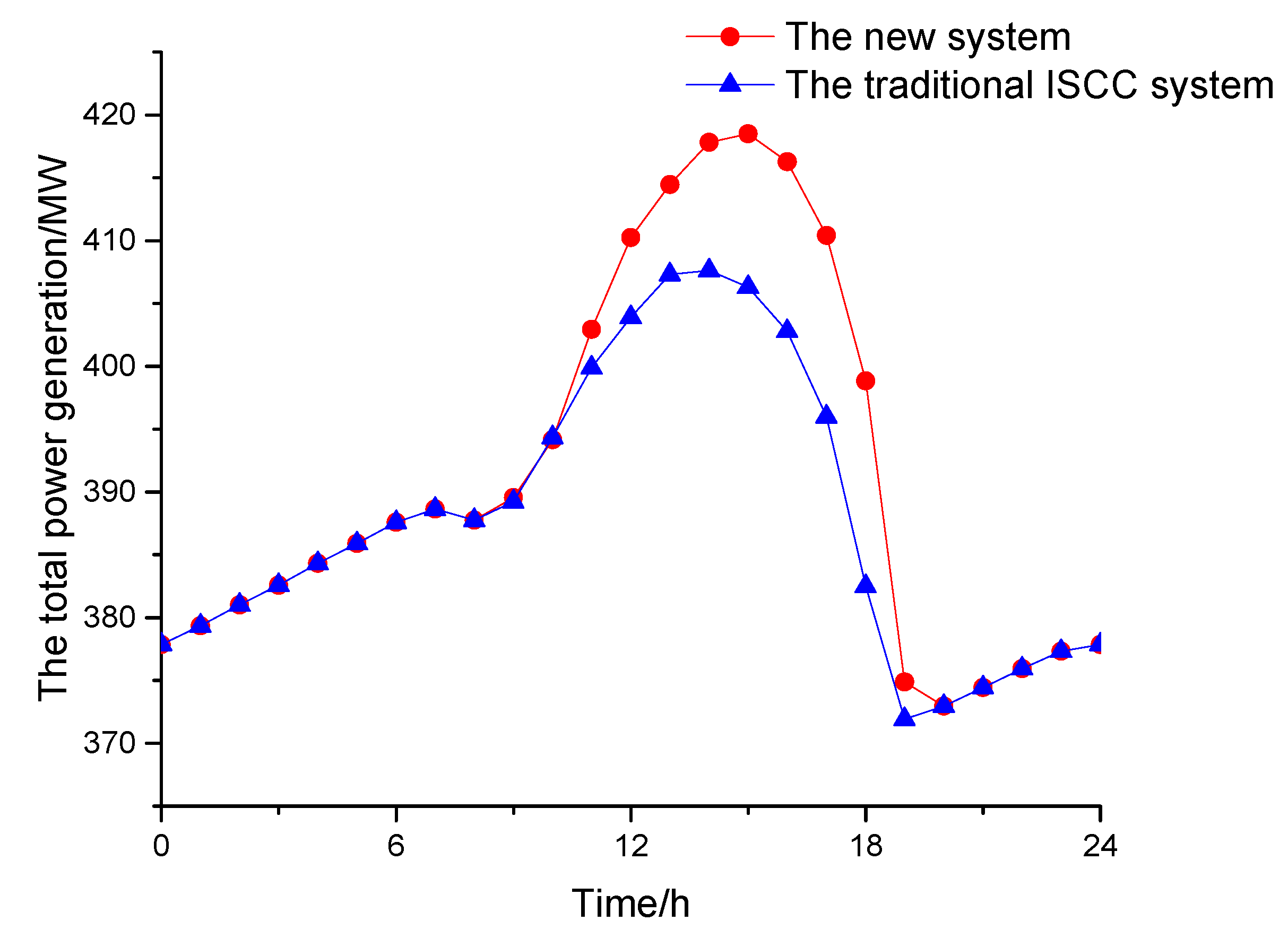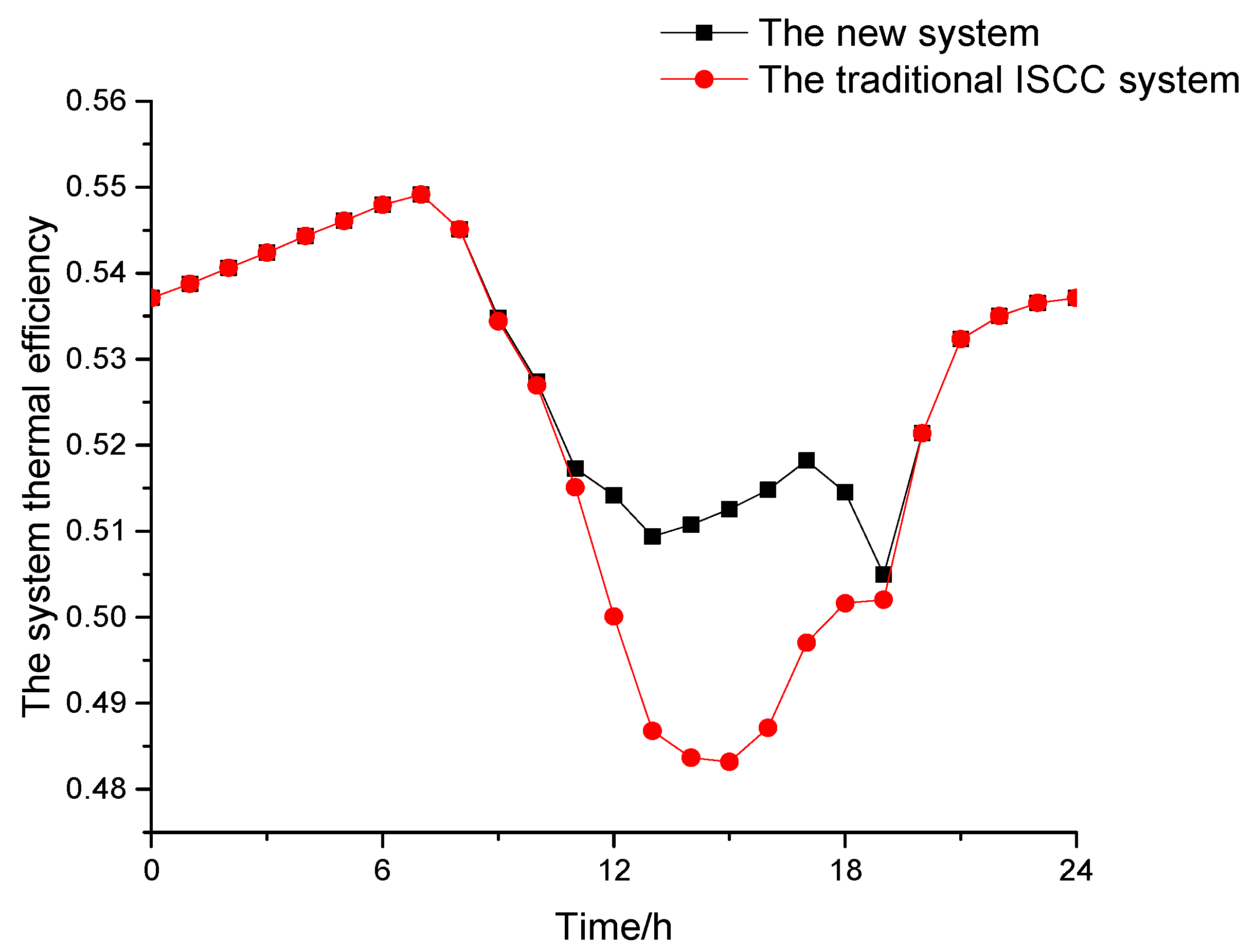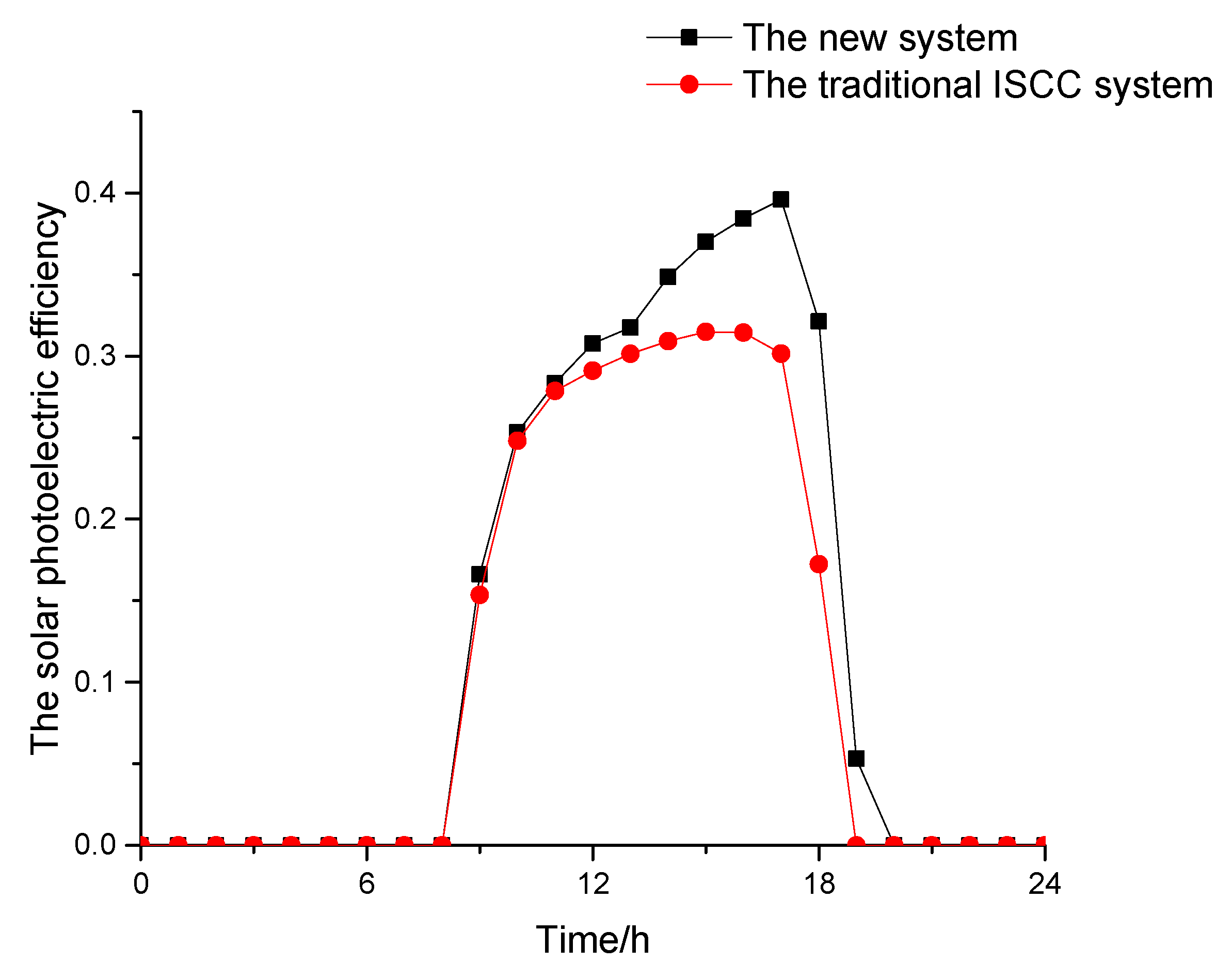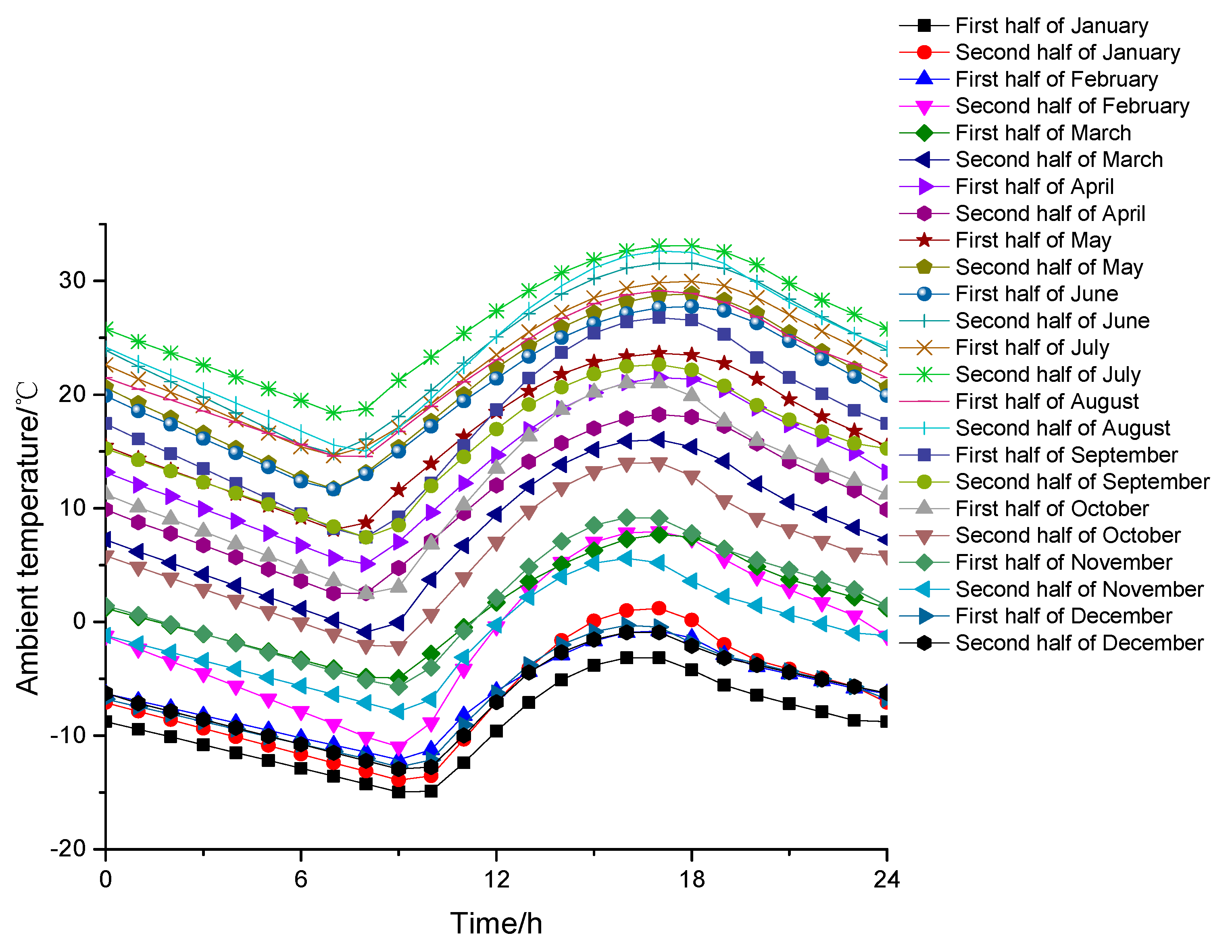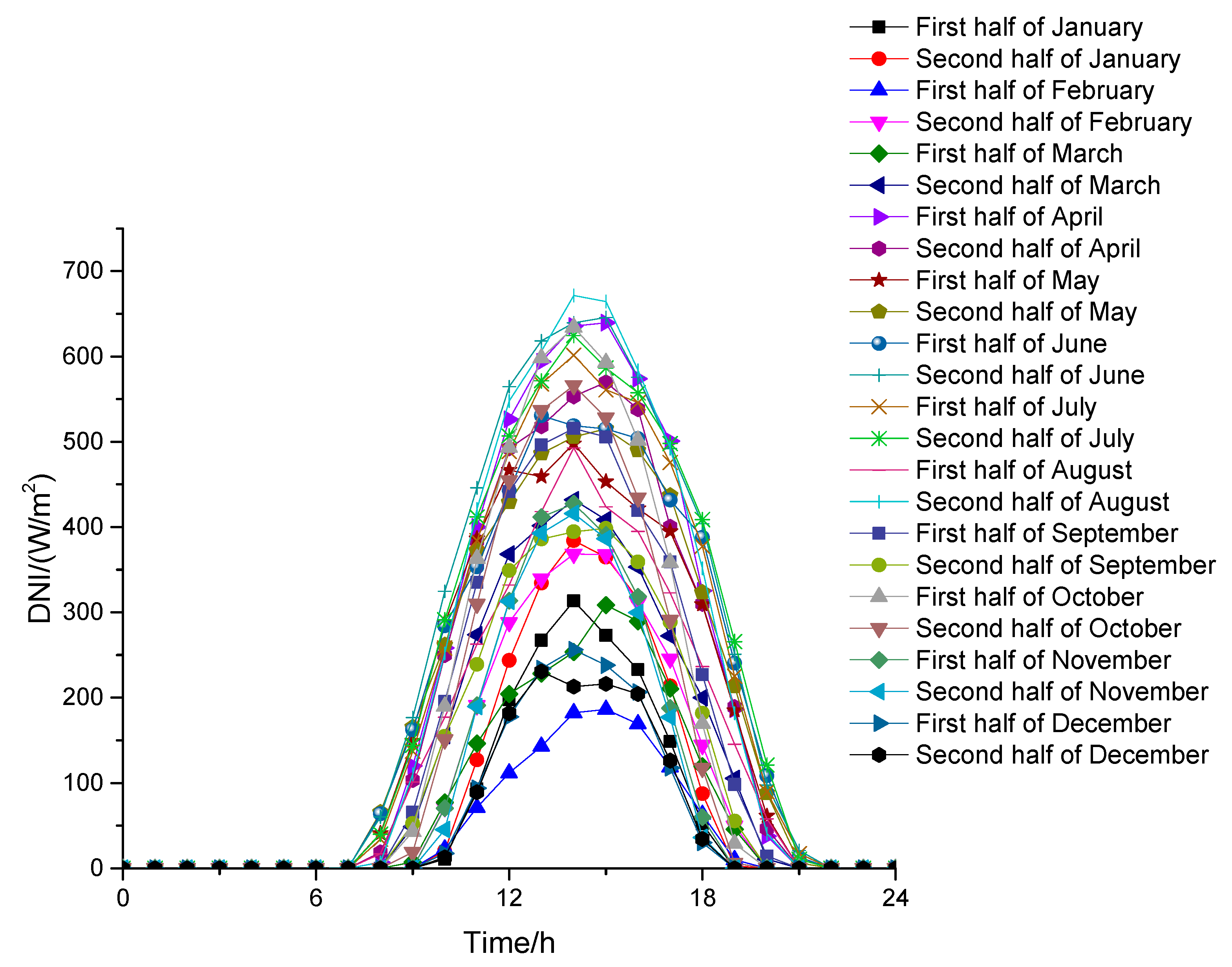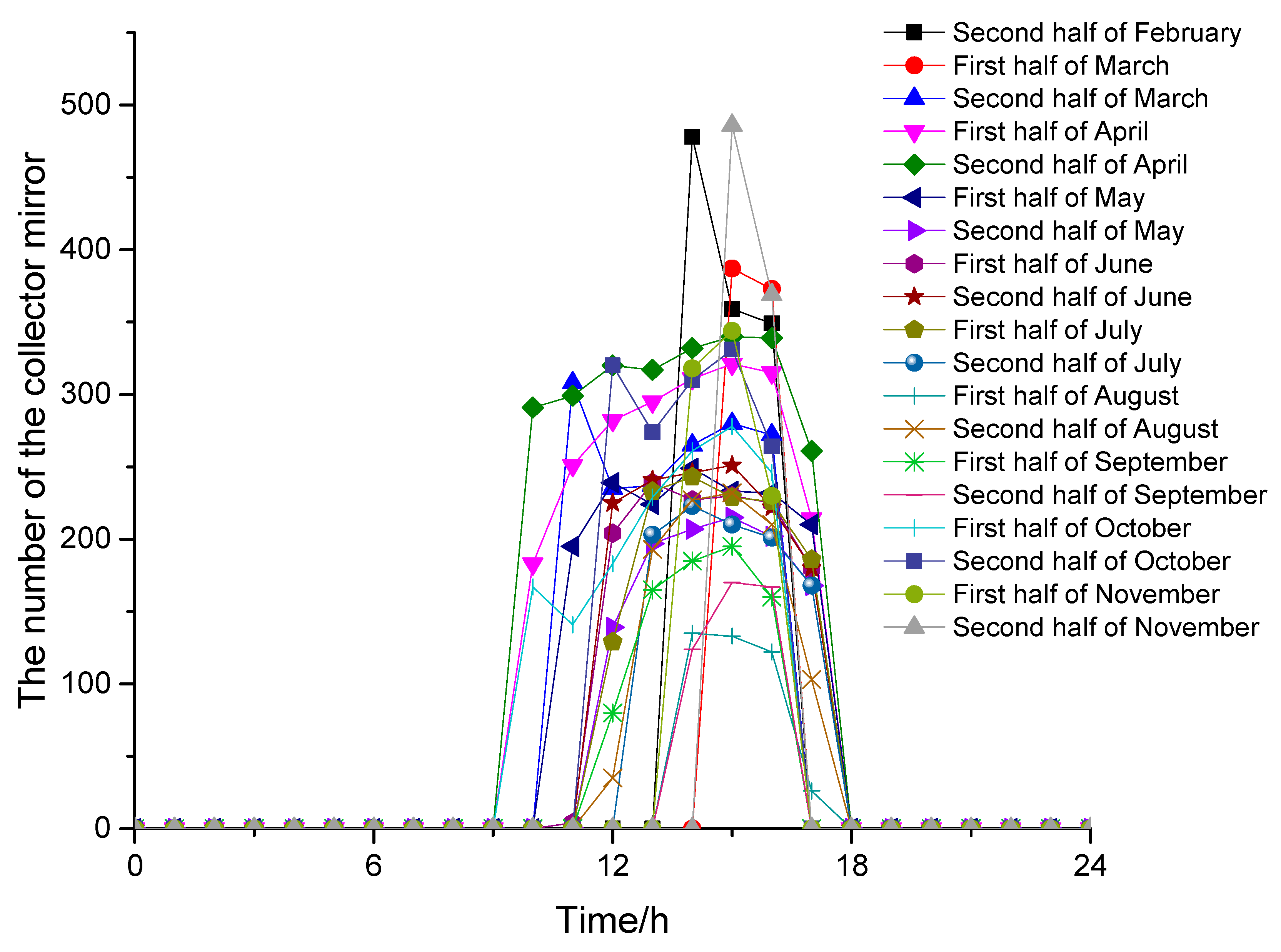1. Introduction
Currently, air pollution and climate change problems due to the massive use of fossil fuels are increasing rapidly [
1]. To solve these problems, the most effective solution is the massive use of renewable energy [
2]. Among the various forms of renewable energy, solar energy has become one of the most promising energy sources due to its nearly unlimited reserves and clean and pollution-free characteristics, and solar thermal power generation is regarded as the most reasonable and effective technology. However, the independent solar thermal power generation technology has some inherent problems such as high cost, unstable operation, low solar photoelectric efficiency and low solar thermoelectric efficiency. Integrating solar energy with traditional fossil fuel-fired power generation systems has become an effective way to further reduce the use of fossil fuel, improve the thermal performance of the traditional power generation system and exploit solar energy. The integrated solar combined cycle (ISCC) system was initially proposed by Johansson TB et al. [
3] in the early 1990s. Solar energy was coupled with the traditional gas turbine combined cycle (GTCC) system. It has been proven that the ISCC system can improve solar photoelectric efficiency, save the investment cost and reduce the fossil fuel consumption by integrating the solar energy [
4,
5]. Now the ISCC system has been applied and demonstrated around the world and is developing larger capacity and higher efficiency [
6].
The thermodynamic performance of the first ISCC system built in Angola was analyzed by Omar Behar et al. [
7]. The study showed that the ISCC system output power increased by 17% and the thermal cycle efficiency increased by 16.5% compared with the traditional GTCC system. M.J. Montes and Rovira [
8] designed an ISCC system with the direct steam generation system (DSG) and compared it with the ISCC system with the heat transfer fluid (HTF). They concluded that the DSG technology had advantages in thermodynamic and economic performances. Antonio Rovira [
9] et al. studied the performances of integrating the solar energy into different boiler heating surfaces of the combined cycle system with DSG. The results showed that the integration of high-pressure heating surfaces had higher thermal efficiency than the integration of low-pressure heating surfaces and the single integration with the high-pressure evaporator had advantages in both the thermodynamic performance and cost. A. Baghernejad and M. Yaghoubi [
10] analyzed the exergy economic performance and sensitivity of the ISCC system with HTF trough solar technology and obtained a series of system optimization measures. A. Baghernejad, M. Yaghoubi [
11] and G.C. Bakos, D. Parsa [
12] have made some economic performance analyses of solar energy trough technology integrated with the Rankine cycle. They analyzed the process of exergy loss and revealed the relationships between the cost of electricity and integration modes. Yuanyuan Li [
13,
14] proposed a novel two-stage ISCC system. The results showed that the system had better thermodynamic performance. Giovanni Manente and Sergio Rech et al. [
15] made thermodynamic and exergy analyses on different heating surfaces of the solar energy integrated into the high-pressure feeding water supply section of the heat recovery steam generator (HRSG) and found that the high pressure boiler (HPB) in the solar single-stage integrated HRSG had higher photoelectric conversion efficiency and output power. The simulation results from Popov [
16] showed that with enough direct normal irradiance (DNI), for single-pressure or dual-pressure HRSG, the higher the pressure of the solar energy integration section was, the greater the energy level of the solar energy was, and the higher the thermoelectric conversion efficiency was. Omar Aboelwafa and Seif-Eddeen K. Fateen et al. [
17] reviewed the researches on the solar Rankine cycle systems for power generation and focused on the working fluids and the application of these systems in water pumping and water desalination.
As we know, the ambient temperature has an important effect on the power output of the gas turbine. The maximum volume flow rate of the air compressor is limited by the inlet cross-section. Therefore, the volume flow rate of the air compressor remains almost unchanged. With the same inlet volume, the air density will be increased by cooling the inlet air temperature of the compressor. So, with the increase of the ambient temperature, the inlet air mass flow rate is greatly reduced. For the GTCC system, the thermodynamic performance of the gas turbine greatly depends on the ambient temperature [
18].
For the gas turbine inlet air cooling technologies, there are many different technologies, such as refrigeration cooling (vapor compression chillers and absorption), fogging systems and evaporative cooling, that have been studied by researchers. Among them, the absorption refrigeration method can be realized by using the waste heat of the power plant, and then cold energy is provided to the gas turbine (GT). Li-Br absorption refrigeration and ammonia absorption refrigeration are two typical absorption refrigeration types. The Iranian Chababar power station adopted the Li-Br absorption refrigeration technology, generating power of more than 14,000 W·h per year, an increase of 11.3% in output power and an internal rate of return of 23.4%. China’s Shenzhen Jingang power plant also uses the Li-Br absorption refrigeration technology, so that the PG6541B gas turbine inlet temperature can be reduced from 31 °C to 17 °C.
Bhavesh Patel, Nishith B. Desai et al. [
19] proposed and analyzed a novel solar-biomass organic Rankine cycle (ORC) powered cascaded vapor compression–absorption system, and the result shows that compared with the standalone cooling and heating, the system has higher cooling capacity, and the system can avail itself of the advantages of a lower break-even point and better thermo-economic performance. Evangelos Bellos and Christos Tzivanidis [
20] analyzed a solar-driven trigeneration system with parabolic trough collectors, and the system was evaluated in energetic and exergetic terms. The results showed that the use of nanofluids as working fluids in the solar field can lead to a higher exergetic performance in trigeneration systems.
Popov [
21] proposed and compared two ISCC layouts with inlet temperature cooling, and analyzed its thermodynamic performance at deign point and its cost advantages. The research results showed that a system with an absorption refrigerator has a lower levelized cost of electricity than the traditional ISCC system.
This paper presents a novel ISCC system, which use the solar thermal energy integrated into the chiller for cooling the gas turbine inlet temperature and the HRSG for increasing the system power output simultaneously. Based on the changes of the environmental temperature and DNI, the new system preferentially integrates solar energy into the Li-Br absorption refrigeration system. When the gas turbine inlet temperature drops to 5 °C, then the redundant collector mirrors are integrated into the HPB section of the HRSG. Through the performance calculations of a typical summer’s day and a typical year, both the thermodynamic and economic advantages of the new system are deeply analyzed.
